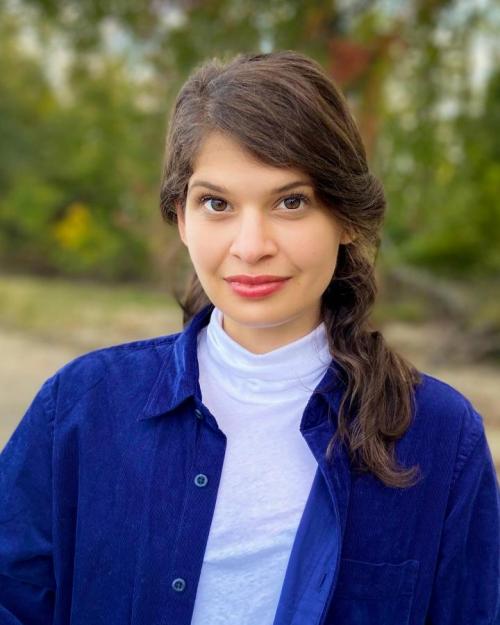Cornell media scholar Anna Shechtman published her first New York Times crossword at age 19 and has since been crowned “the new queen of crosswords” in the media for reenergizing this puzzle genre and cracking into its white male power base. These days, most crossword editors and constructors are men, but it wasn’t always this way.
“I’ve learned how woman-coded the puzzle was in the first half of its life – how many puzzles were made by college-educated housewives who were looking for relief from housework and an outlet for their active minds,” said Shechtman, a Klarman Postdoctoral Fellow in literatures in English, who will join the College of Arts and Sciences faculty as an assistant professor in fall 2024. “As we’ve shifted to a service economy marked by gig work, many jobs have become feminized, in which low wages, flexible hours, and few benefits are the norm. I am interested in this inverse history: how did puzzlemaking masculinize as a profession? Why is a job once associated with flappers and housewives now run by men?”
In “The Riddles of the Sphinx: Inheriting a Feminist History of the Crossword Puzzle,” Shechtman combines a history of the crossword highlighting its early women innovators with her memoir of a personal challenge. As a teenager, puzzle construction was intertwined with her anorexia and was also key to her recovery.
Although written for a popular audience, the book resonates with Shechtman’s scholarly media studies research, tapping into facets of media history.
The College of Arts and Sciences spoke with Shechtman about the book.
Question: Why is 2024 a relevant time to spell out and claim the history of the crossword through the stories of women who brought it to prominence?
Because they patrol the borders of “common knowledge” and “proper usage,” crosswords have become hot zones in today’s culture wars. What words and phrases are “puzzle- worthy” is ultimately a fraught question: Are the crosswords in mainstream newspapers too white? Too straight? Too male? Can words, stripped of syntax, carry all this baggage? And will diversifying the demographics of crossword constructors necessarily diversify the words included in the puzzles themselves?
The history of the crossword puzzle offers a dramatically clear view onto the politics of language – how and why words become such political objects, drawing communities together and fracturing them with equal force. The year 2024 seems as good a time as ever to get some clarity about these questions because they haunt all forms of representation, not just the daily puzzle.
Q: How has your exploration of the nature of puzzles helped you analyze your anorexia as a teen?
I began the project wanting to understand how the crossword puzzle industry masculinized. That was one motivating question. The other was far more personal. I wanted to better understand a peculiar fact of my biography: I began writing crossword puzzles exactly around the time I started starving myself at age 15. I somehow knew they were related phenomena, but I couldn’t grasp their connection.
In clinical literature, the history of anorexia is often described as a riddle or enigma, with no common or clear etiology. Having written this book, I now understand how crosswords served me when I was sick – both as an abstract idea that anchored my wayward teenaged identity and as a sensation, a way to escape from the feeling of embodiment into the body of language.
After I sought in-patient treatment – and began publishing puzzles in the Times – something strange happened. I was solicited by puzzle editors looking to diversify their bylines. I began to be known not just as a constructor, but as a “woman constructor.” What was once a private, cathartic but also symptomatic activity became a public and political activity – now symptomatic not of anorexia, but of a pervasive cultural gender gap.
Q: What do you foresee for the future of the crossword and the community of constructors and fans?
Since 2014 and 2015, when I worked for Will Shortz [crossword editor of The New York Times], the world of crosswords has changed dramatically. There are many new outlets, including some indie puzzles that specifically work to mentor constructors from backgrounds that are underrepresented in the community.
The number of people who got really into puzzles during the COVID lockdowns was instrumental to these changes: There’s been an influx of new energy and new publications, many of which are assuming gender parity and racial inclusion as their baseline when developing a roster of constructors or editing grids. The result is a diversified puzzle landscape and a diversified puzzle lexicon, as new constructors are bringing their worldviews (and inevitably new words) into their grids. I imagine – and I hope – that these trends will continue.
One of the women I wrote about in Riddles, Margaret Farrar, was the first crossword editor at the Times. She initiated that puzzle in 1942, at the start of the country's entrance in World War Two. "You can't think of your troubles when solving a crossword puzzle," she used to say. As much as my book means to tease out the troubles within the puzzle, there's abiding truth to her mantra. There will always be troubles, and there will always be puzzles—there for us to engage our minds to disengage from anxious thought.
Read the story in the Cornell Chronicle.





